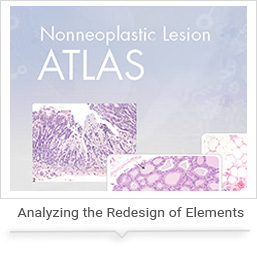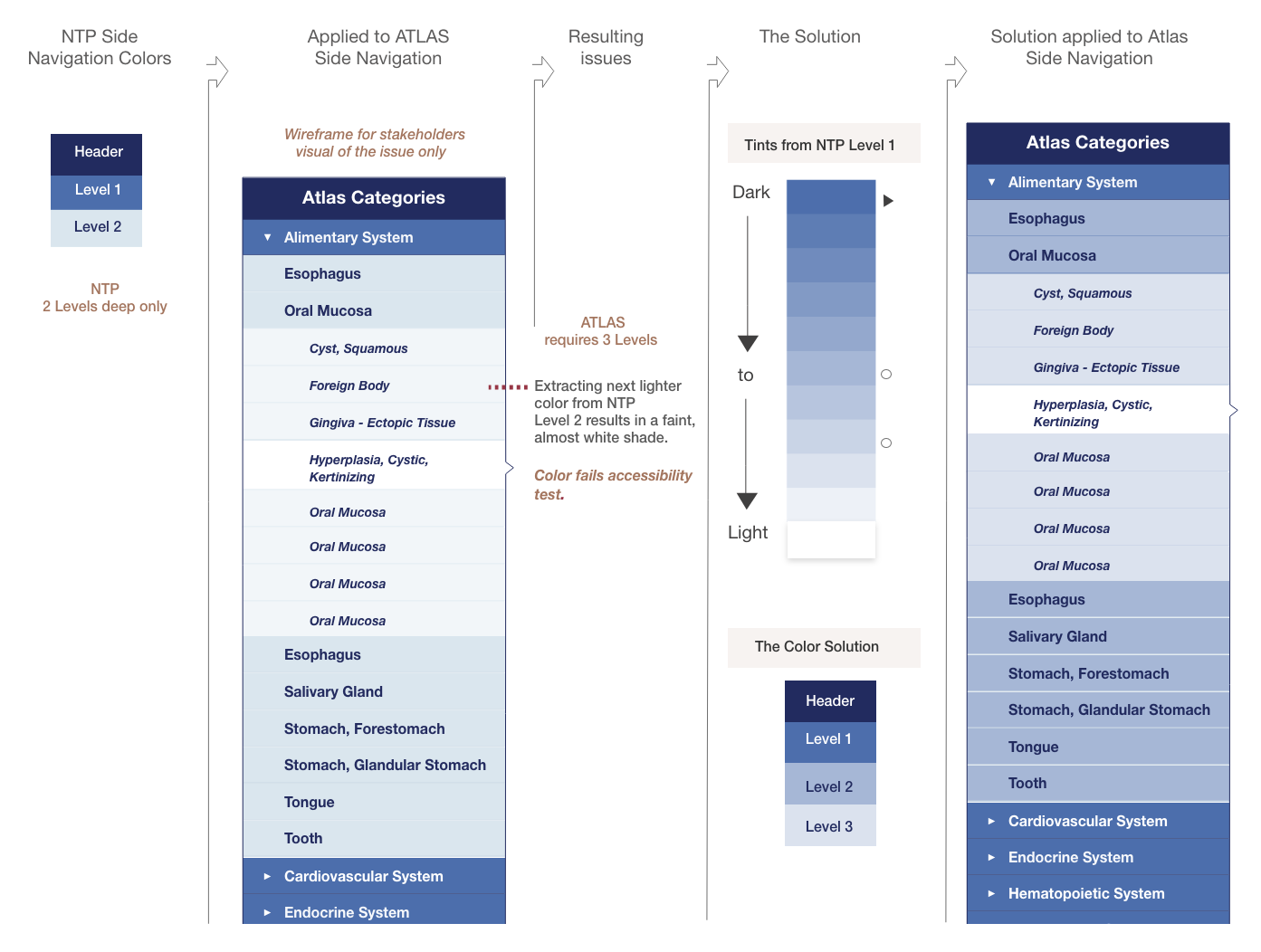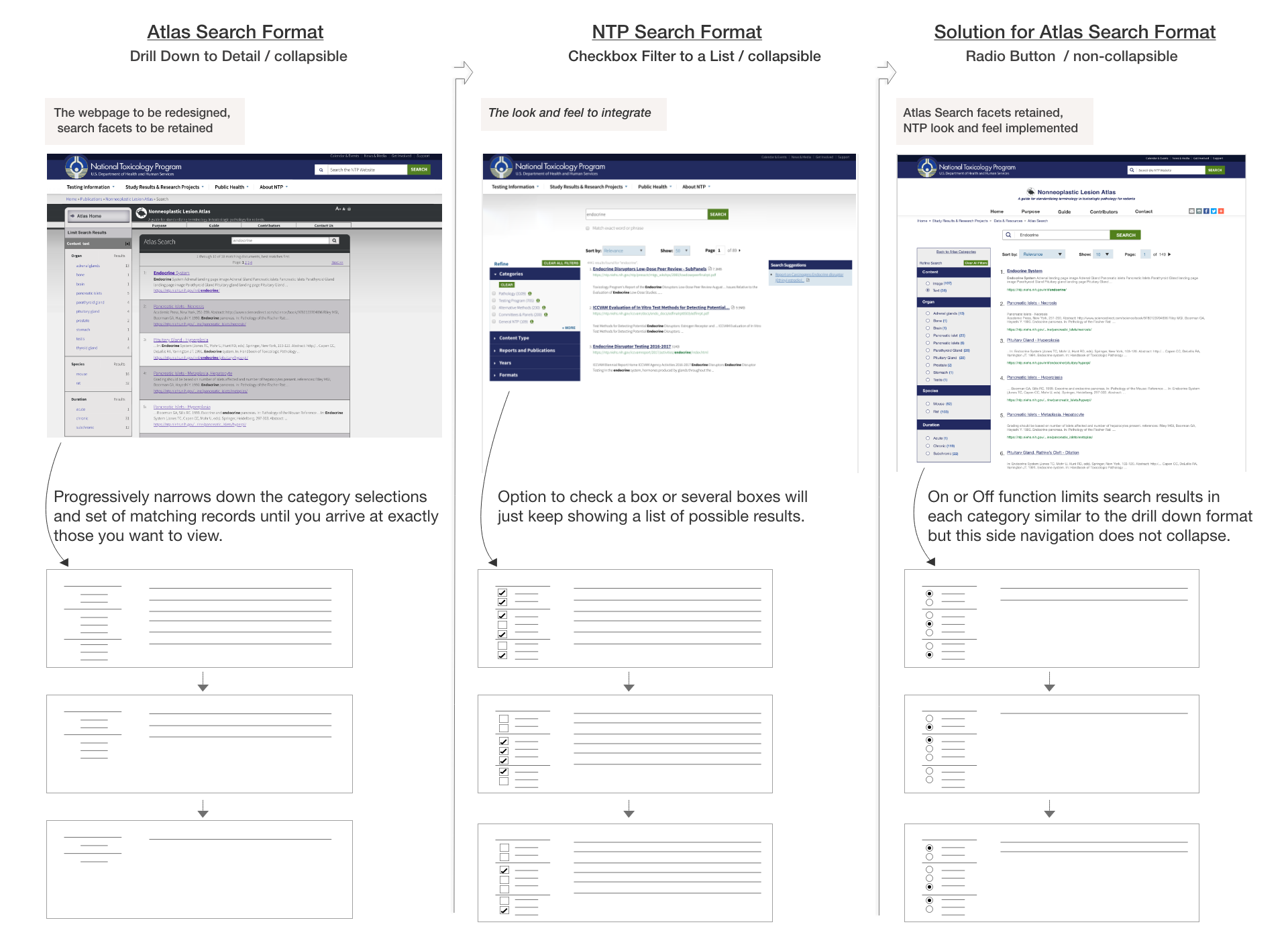The Nonneoplastic Lesion Atlas is a pathology website incorporated within the National Toxicology Program government website. It was originally created externally and maintained through a third party. The graphite theme of Atlas does not conform to the NTP branding. It looks like a completely separate website.
As the parent website, NTP wanted Atlas to be redesigned to align its look and feel. All existing issues on the Atlas fuctionalities or user issues must be addressed on the redesign.







